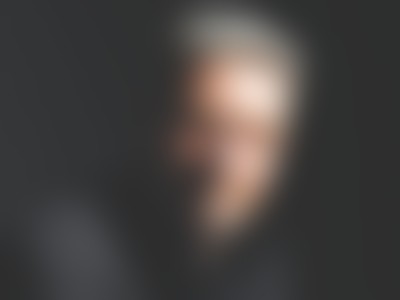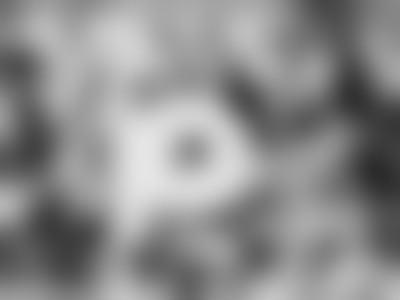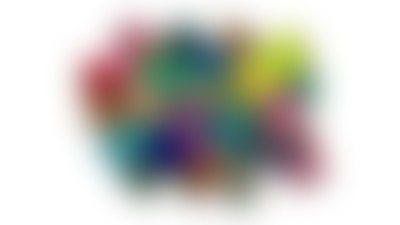Exclusive interview with Ken Cato
Lead Designer for the Southern Hemisphere Ken Cato is a Founder of Cato Brand Partners, a company that has worked with Asia, Europe, the Middle East and Latin America. Producer of educational events for designers AGIdeas.

During its existence, Cato Brand Partners has worked with a huge number of large and small companies on five continents. The agency cooperates with clients from the aviation business with special affection. Their account includes branding for carriers Air India, Quantas, Pluna, airports Dubai Airports, Wellington Airport.
Tell about the beginning of your career in design.
I stumbled into design by accident, but I always had an awareness of it without realizing. Even small projects at home motivated me to plan in detail: I asked why, who it was for, and what the purpose was. This is the same approach I take with clients today.
By the end of school, I excelled in woodwork and carpentry. One day, the principal called me in, noting my talent for drawing and art, and suggested I apply to art school. This surprised both my family and me.
Initially, I struggled with my drawing skills, and even in my final design exam, I thought I might fail. Yet, surprisingly, I topped the state. That fear taught me that I could always improve, which fueled my personal growth. When I started my own business, I knew I didn’t need to worry about aesthetics — this would come naturally. Instead, I focused on the strategy of what we could achieve for our clients.

For nearly 55 years, I’ve had the privilege of working with exceptional people —both my team and our clients — in around 114 countries.
Why did you decide that hiring was not for you and set up your own agency?
This was another accident.
I decided to set up my own studio by accident during a business lunch with seven men from different industries. I chatted with a guy in publishing about the state of design in Australia, which led to me quitting my job to start a company with my partner. We had no clients, just $500 each, and borrowed some money from the bank. Our first major purchase? Two chairs. Back then, all we needed was a pen and paper.

Naivety played a huge role; we never would have taken that leap if we had been more experienced. A year and a half later, we entered a small identity program in a national award and won the gold medal. I still recall a casual toilet conversation with my design hero of those times, who praised our work in very colourful language. This award helped us attract a much bigger client. Our growth stems from focusing on doing what we do well. Each client's success brings more of the same. If you do rubbish, it will attract more rubbish.



How do you create innovative things?
I've never liked specialists because they often rely too heavily on systems, which stifles creativity. Instead of developing a rigid system, we focus on solving each unique problem with a custom methodology based on our experience. When work starts to reflect the studio's style rather than the client's needs, designers falter. The real challenge is exploring new ideas.
Clients often claim they want something different, but deep down, they usually want to fit into their industry and peer group. Once they've spent money trying to fit in, they then ask how to stand out. I always introduce this question early: do you want to fit in or stand out? It's crucial to clarify that from the start. You will not be remembered by fitting in.



Which of the world's designers impressed you the most and why?
I've admired many artists for their individuality, but sadly, many designers I respect are no longer alive. I was fortunate to learn from them. However, the people who have shaped my design thinking are mostly business leaders. I haven’t sought artistic skills from them, but I've learned to integrate design as a solution to business problems. I've gained more from my clients than I've taught them; we feed off each other's perspectives. My greatest lessons come from the smartest people, not just designers or artists. Skills and techniques can be learned, but it's all about how and why you apply them. For me, solving business problems through design has driven my approach, so I consider some business and government leaders my greatest teachers.

What are your top 3 favorite works of yours from Cato Brand Partners?
It’s hard to choose favorites — like picking a favorite child! I've published four books asking other designers about their favorite projects, and their answers often annoy me because they focus on personal or artistic endeavors. I love projects that solve big problems, like our extraordinary work in China.
What began as a small identity program turned into a major project with packaging and store designs. It led to an opportunity where I sketched a museum idea for the client, and to my surprise, he loved it — resulting in a collaboration that evolved significantly.
He expected every project to challenge him and transform the brand. He sent me a letter, translated, expressing how my design thinking impacted his business philosophy and life. The museum (Beeseum) project embodies thousands of individual designs, projects, sculptures, audiovisuals, architecture, and gardens— all telling the story of the business's relationship with the environment. It's set to have its grand opening soon after a successful soft launch. Visually, it’s stunning; wherever you point your camera, you'll capture extraordinary images full of color and movement.
Another rewarding experience came from a smaller client who told me I gave them the courage to be who they thought they were. They challenged their products and took bold design risks, ultimately becoming key figures in their industry. These contrasting experiences highlight that it's not about project scale but the significance of the results for the client. We’re fortunate to work with amazing clients, each with unique cultural perspectives. I love crossing cultural barriers and discovering how different beliefs shape creativity — turning the ordinary into the extraordinary.

Your identity for BENQ was stunning for its time. Tell us about the essence of the idea of dynamic identity. How do you assess its potential now that motion design and video formats are widespread?
I believe we’ve evolved significantly since then. We have built on the principles that at that time seemed a bit radical. About three years ago, we enabled a client to change their identity whenever necessary, providing a system that accommodates constant change in their dynamic industry. That was an exciting challenge — how to create a brand that can continually adapt.
Today, if it doesn’t move, it probably doesn’t exist. When I started, working in three dimensions it was thrilling, but now we engage with six or seven dimensions, incorporating elements of smell, touch, taste and sound alongside visual aspects. This evolution excites us as we explore new ways to conceptualize brands in all the spaces and channels they exist in.
We often discuss broader visual language and how brands can still be recognized without their trademarks. The challenge for clients is to consider where their identity will be experienced — beyond traditional mediums like letterheads or business cards. It may involve sensory branding through sound, smell, or touch.

With AI now influencing this landscape, designers must evolve continually. Our philosophies and techniques need to adapt to remain relevant. We can’t just encourage clients to be adventurous; we must pioneer new approaches ourselves. As a favorite saying goes, why worry about the future? That's where we plan to spend most of our time, and as designers, we thrive on being challenged and discovering new markets and methods. That’s what motivates us to go to work every day.
What advice could you give to owners of design and branding agencies?
It’s a very good question because I think the design profession often cannibalizes itself, failing to recognize true value they offer to business. We're moving beyond being seen merely as decorators to having a strategic role in business, although cost-cutting in brand areas is false economy still poses challenges. While some may view our services as expensive, clients often find us to be good value for money. I think it was Dr Ralf Speth who said:
"If you think good design is expensive, you should look at the cost of bad design."



Designers must offer more than just graphic design; we need to bring innovative ideas and stay conscious of our responsibility to clients and their budgets. We stopped entering design awards in the late '80s because we felt that pursuit distracted us from our primary goal: creating impactful work that brought results for the businesses we worked for. Though we aim to produce beautiful and exciting designs worthy of peer recognition, our priority must always be the client.
It's crucial for designers to mature and acknowledge the real-world impact of our work. Too many awards focus on self-congratulation rather than recognizing contributions that truly change society. The message is clear: we must understand our role, leverage our unique skills, and remember why we get paid — to add value in meaningful ways.
You are the author of many books on design. One of the latest is Recognize me. Could you say how this book will help brand keepers and designers better understand the essence of a brand?
My recent book, weighing nearly three kilograms, is not only a practical doorstop but a collection of insights aimed at both designers and business professionals. While I can't guarantee its utility, I felt compelled to share the lessons I've learned from working in various countries across different industries. It serves as a bridge to offer new perspectives and solutions to common problems.
Ultimately, it's about sharing experiences through stories and images that may inspire others. As the saying goes, if this book helps even one person, it won't be a waste of time. My hope is that it stimulates thinking and encourages a deeper understanding of brand essence for brand keepers and designers alike.

What is your attitude to the use of AI in design today: is it a blessing or a broken tool?
It's too early to determine if AI in design is a blessing or a broken tool. While some may view it as making design easier, those who truly assess it know it's just another tool. We've had success using AI for rapid 3D renderings, which aids speed in concept development, but the long-term results remain to be seen.
Just as society adapted to computers, we'll eventually find AI's place in design, but I doubt it will revolutionize the field. Technology is evolving rapidly, but critical thinking hasn't always kept pace. Designers must balance old-school techniques with new tools.
One of my designers expressed frustration at my slower computer skills, but I view their speed as a hindrance; I can envision designs in my mind while they are still figuring out which button to push... Young designers should focus more on ‘using their minds’ rather than just relying on technology.
AI has its uses, and we’ll discover better applications for it, but we must remain open-minded in a rapidly changing landscape. Creativity shouldn't become formulaic or self-indulgent; we must remember our responsibility to deliver meaningful work.

The geography of your clients is incredibly wide: Cato Brand Partners is not limited to Australia; you work with Asia, the Middle East, Europe and Latin America. What practices do you use to understand the markets, cultures and mentalities of different countries?
My favorite part of the job is collaborating with people from diverse backgrounds and beliefs — it's a bit selfish, as I love to learn from them. I enjoy taking ideas from one culture to another, where they seem revolutionary, even if they're old. One key lesson I've learned is the importance of listening more and speaking less when navigating different societies.
My partners are essential for cultural understanding; they help bridge the gap between project briefs and local nuances. Often, what seems obvious isn’t accurate, so I rely on them to clarify cultural meanings. For example, working with an Arabic typographer produced a stunning piece of lettering that I could only imagine. Similarly, collaborating with a Chinese artist for a paper cut identity brought local authenticity that graphic design alone couldn't achieve.
Over the years, I've engaged with various cultures across Asia, Latin America, and beyond, including potential projects in Russia. It's exciting to collaborate with different cultural groups, from animation studios to mosaic artists. Each experience is a discovery, and I believe this exploration will never end.
You are not only one of the brightest figures in Australian design, you are also shaping the design community in your country. Tell us about the AGIdeas events that you produce?
AG Ideas had a remarkable 25-year history, bringing 660 designers to Australia and sending about 67 students abroad. We recognized that different groups — designers, students, businesses, and educators — had unique perspectives on design. This led us to create an event that facilitated dialogue and interaction among these groups. Educators, in particular, seemed disconnected from industry needs, so we also engaged with them to better align education with real-world demands.
After losing government collaboration, I chose to take AG Ideas to China, where we conducted successful events. I enjoyed watching young committee members grow in their roles; their enthusiasm and work ethic were inspiring. Contrary to popular belief, we weren’t profiting from the event; I was investing in it because I believed in its value for the global design community.
The conference inspired similar events worldwide, and I proudly assert that none surpassed it. Its momentum and recognition were extraordinary, especially among top designers globally. One skeptical designer later told me it was "life-changing," which I found flattering but exaggerated.
Each year, I conduct intensive teaching sessions at various universities worldwide, enjoying my roles as an adjunct professor and guest lecturer. My input might be brief, but I strive to make it impactful.


What qualities should a designer have to be hired by Cato Brand Partners?
We don't hire many juniors; experienced hires often come with fixed methods that concern me. We prioritize attitude over skills — it's crucial that new team members align with our family dynamic and challenge us constructively. Listening is key, even if we don't always agree.
Ultimately, it comes down to whether the person is good for our culture. We aim for quality over size; if someone can improve our team, they have a place here. My inspiration comes from living life on my own terms and doing meaningful work that benefits others.
The biggest challenge for me is consistently striving to do things better and not repeating past efforts. I love seeing my team achieve things I couldn't, as it indicates progress. We keep our team small, usually one or two per office, to maintain quality and focus on work. We're more effective that way and want to attract the best talent. For us, it’s all about the quality of work, not the quantity of people.
How is the profession of a designer different now and, say, 20 years ago?
Leonardo da Vinci freely crossed disciplines, and that spirit has been part of how we have viewed design for over 55 years. I dislike the term "graphic designer" because it feels limiting; I prefer focusing on the best way to solve problems, collaborating with product designers, filmmakers, and even musicians.
In the branding world, businesses are slowly recognizing the value of design, although there's still convincing to do. Our ability to communicate across cultures has improved, making collaboration easier than ever. However, despite access to incredible tools, I’m not sure our work has necessarily improved, but the thinking and strategy have developed significantly due to cross-cultural experience and the volume of work.
Today's designers face the challenge of feeling like everything has already been created. Many start projects by turning on their computers rather than engaging their creativity. This reliance on online resources can stifle original thinking. It’s essential for designers to step away from their gadgets and allow their ideas to form naturally, which is a real challenge today.


